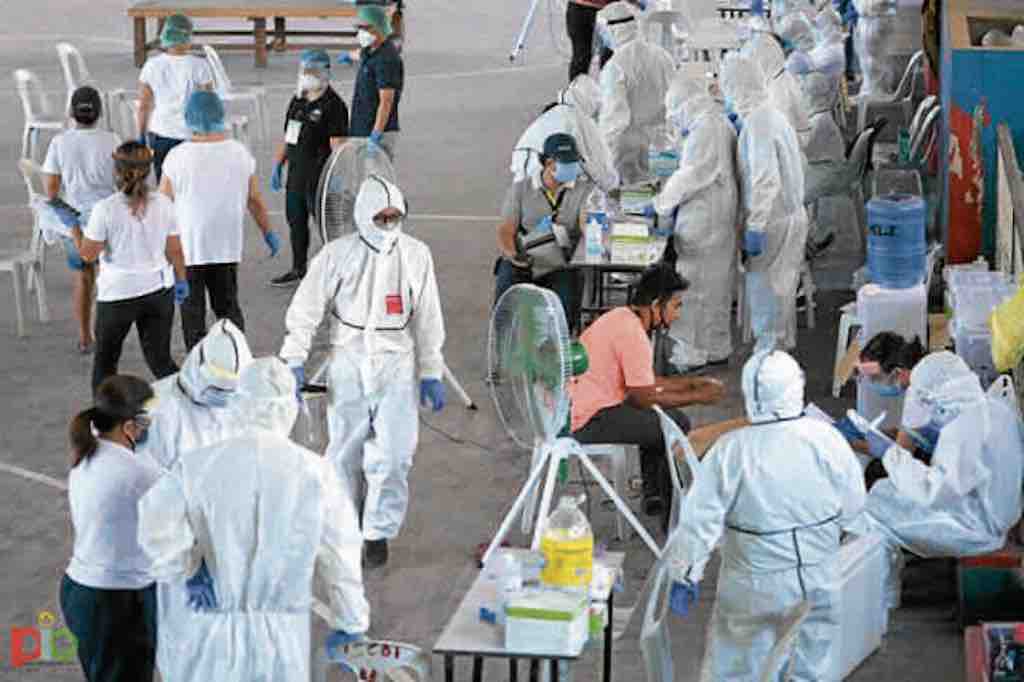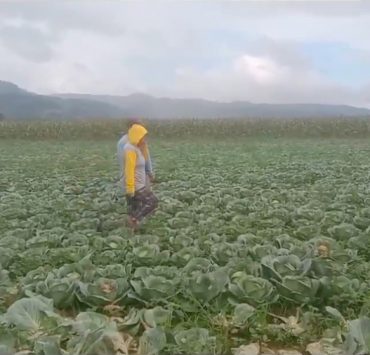Over the past year, the government has had many opportunities to improve our COVID-19 response. In a Jan. 2021 report released by Australian think tank Lowy Institute, the Philippines is one of the worst performing countries in handling the crisis. Out of 98 countries, we rank at 79, with an average score of 30.6 out of 100 points when it comes to dealing with pandemic-born issues.
In case you didn’t know, the country has one of the longest (and arguably harshest) lockdowns in the world. As of Mar. 22, the country has also logged its highest single-day COVID-19 tally of 8,019 new cases.
8,019: A NEW ALL-TIME HIGH.
— Inquirer (@inquirerdotnet) March 22, 2021
This is the highest single-day tally of COVID-19 cases in the Philippines amid a new and quicker coronavirus surge. #CoronavirusPH #COVID19PH pic.twitter.com/hHRZ0cKVbc
In observance of the 373rd day of lockdown (sigh), here’s how far the government’s campaign against COVID-19 has fared versus around this time last year.
Type of quarantine
Around this time last year, Luzon and parts of the rest of the country were placed under enhanced community quarantine (ECQ). During the most difficult parts of lockdown, double the amount of people went hungry versus pre-lockdown statistics and human rights violations became one of the leading issues right alongside the pandemic.
[READ: Don’t use the pandemic as a sorry excuse to disregard human rights]As of Mar. 22, there’s a new type of quarantine variant the “NCR plus” region will be subject to. Due to the alarming number of new cases around the country—especially in the Greater Manila Area—the National Capital Region (NCR) plus the provinces of Bulacan, Cavite, Laguna and Rizal have been placed under a general community quarantine (GCQ) bubble.
According to the government, being inside the bubble isn’t a “lockdown” since businesses are still allowed to operate and there is no suspension of public transportation. What the NCR plus bubble means is that non-essential travel in and out of the bubble (like tourism) will be strictly regulated. The only people allowed to go in and out of the bubble are essential workers with valid IDs, frontliners, government officials, accredited humanitarian workers and the like.
Border control
One of the major actions (or rather, inactions) the government was criticized for during the onset of the pandemic was lack of border control. On Jan. 30 of last year, the Department of Health (DOH) recorded the first case of the “novel coronavirus” from a woman who traveled to the Philippines from Wuhan via Hong Kong.
Instead of imposing strict border regulations for incoming visitors from outside the country, the president only ordered a travel ban on passengers coming in from China’s Hubei Province, where the virus was thought to have originated.
Earlier this month, the government announced a new set of restrictions for international travel. Instead of banning international visitors during the start of the pandemic as a preventive measure, the National Task Force against COVID-19 (NTF) has restricted inbound travel from abroad starting Mar. 20 until Apr. 19.
While the restrictions initially included a ban on returning non-OFW Filipino citizens, the NTF has since revised their orders to allow the entry of all Filipino citizens.
Loans and debt
Another highly criticized action the government has taken is the loans they have taken out to “finance” the fight against COVID-19. Of the initial P600B war chest the government has prepared to battle the pandemic, over half was funded by loans from international financial organizations.
The Philippines borrowed a record P2.74 trillion in 2020 to fight the health and socioeconomic crises inflicted by the COVID-19 pandemic. https://t.co/u9qIY5aIfu pic.twitter.com/J8FdtlDkLP
— Inquirer (@inquirerdotnet) March 1, 2021
On Mar. 12 of this year, the government took out another loan worth $900 million in a day to help finance the procurement of COVID-19 vaccines. A $400 million loan was approved by the Asian Development Bank (ADB) and the remaining $500 million was granted by the Washington-based World Bank.
The government’s transparency when it comes to COVID-19 spending has also been a hot button issue. In May of 2020, a group of volunteers released the COVID-19 Citizens Budget Tracker in order to help hold the government accountable for the money spent during the pandemic.
In a report released Mar. 2 of this year, the nation’s total debt rose to P10.33 trillion as of Jan. 2021.
That’s the highest it’s ever been.
COVID-19 status updates
The Bayanihan Heal As One Law mandates that a weekly status update must be delivered on the state of the nation’s fight against COVID-19. The report—delivered by the president himself—is supposed to give the people an idea of how the nation is fairing in the fight against the pandemic.
In the early days of the president’s weekly address, people used to wait for hours on end for the updates. Dubbed by some as “The Late Late Late Late Show,” these televised conferences used to air late into the night and at times even past midnight.
At times, the president’s updates also included inflammatory comments (we can’t forget that “shoot them dead” directed at “the left” now can we?) that spurred even more outrage.
These days, the president still delivers his weekly Monday address (albeit at a more appropriate time).
Solutions (A.K.A. waiting for the vaccine)
At the onset of the pandemic, the government shunned mass testing in favor of “waiting for the vaccine” as a solution. After nine months of the nation and its people being put through the ringer, the government backtracked their initial stance on mass testing and ensured the public that it was “always the priority.”
President Duterte received widespread criticism after realizing how important mass testing is nine months into the pandemic and with over 400,000 cases.
— Inquirer (@inquirerdotnet) December 8, 2020
Malacañang, however, insists testing for the new coronavirus has always been their priority. Read: https://t.co/mFnkxLXIvD pic.twitter.com/zlNQOZjc8s
As of Mar. 15 of this year, the DOH has received a total of 1,125,600 COVID-19 vaccines and administered 193,492 doses. Shortly after this, the country recorded its highest single-day number of new COVID-19 cases on Mar. 22 at 8,019.
In conclusion: not much
As far as the general public is concerned, the main difference between March of 2020 and March of 2021 is that going out is kind of an option. Instead of the hard lockdown imposed by the government (with the need of quarantine passes and the like), a lot of us are “free” to leave our homes—and potentially catch the virus.
In a nutshell, the country’s pandemic response is still dismal.
While vaccines are on the horizon, the distribution of the much-awaited shots are mostly still up in the air.
While some of us have the luxury of working from home, let’s not forget the people who are out there making sure the rest of us are safe. Even moreso, let’s collectively demand action from the government.
Remember, the government should serve the people.
Not the other way around.




